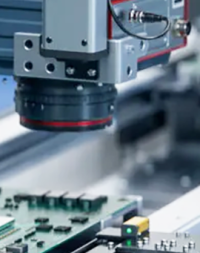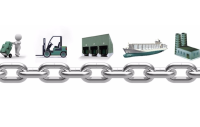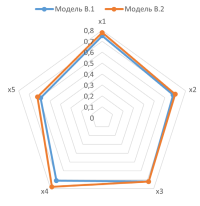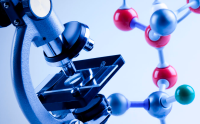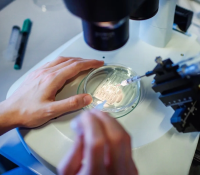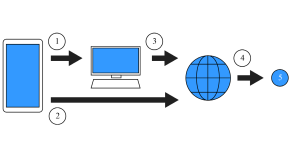THEME OF THE ISSUE: THE CENTER OF GRAVITY OF NEW IDEAS
The main reasons for the emergence of an innovation barrier that separates the theoretical development of knowledge-intensive projects from their practical implementation are considered. When assessing the maturity level of an innovative startup, it is proposed to use the technology readiness level scale. To overcome the innovation barrier, a number of measures have been proposed, including both methods of state regulation and measures for the development of an innovative culture in society.
There has been shown the relevance of research on the youth start-up movement, which is due to the importance of creating new technologies and innovations for the Belarus’ economy. The article gives the interpretation of the “start-up” notion, the history of the start-up movement, and points to its role in the socio-economic development of the country. The regulatory legal acts aimed at creating conditions for the implementation of innovative ideas in various spheres of the economy are presented. A brief overview of the tools and mechanisms for start-ups support is given, including financial assistance, intended to intensify innovation activities, stimulate advanced studies, and promote the commercialization of the research results and developments. The data on organizational, informational, and financial support for start-ups by creating a favorable environment for their development, including on the basis of innovation infrastructure subjects, was analyzed. A number of main problems in the start-up movement support were identified.
The mechanisms of how governments can stimulate the commercialization of the results of scientific research of universities are considered based on the cases of international and domestic practice. The experience of a number of European countries, the USA, China and Russia related to the financial and legal support for the implementation function of universities is analyzed. The key points of supporting and stimulating the commercialization process of innovations by Belarusian universities are presented. A set of priority support measures and recommendations for transforming universities' technological assets into market offerings is proposed. It is shown that in the context of the formation of a knowledge economy, scientific and technical potential serves the basis of the state's innovative progress and the driver of accelerated development through the implementation of competitive science-intensive technologies in high-tech industries. Universities, acting as a full-fledged subject of market relations, ensure the creation and development of products with high added value, as well as carry out their subsequent commercialization.
The authors considered the principles of restructuring a classical university based on start-up technologies. An educational, scientific and experimental version of the start-up “Avtodomino” is presented to test the possibilities of design and implementation in the “University 3.0” infrastructure.
An overview of the most successful Russian and Belarusian start-ups with growth prospects is presented.
INNOVATION ECONOMY
The article presents the results of the analysis of the formation and development of the logistics system in Belarus. The position of the country in the world ranking of logistics development, the advantages and disadvantages that create opportunities and threats for the functioning of supply chains in the Republic of Belarus are noted. It is established that the developed legal framework for managing the evolving logistics sector acts as an organizational and economic basis for improving the economic activities of Belarusian producers and a tool for optimizing flow processes. Special attention is paid to the role of logistics in the country’s counteraction to economic sanctions. It is identified that changes in market conditions, production and technological processes and directions of movement of logistics flows require the harmonization of the system based on internal reserves and the development of the logistics network as a mechanism for activating of foreign trade and foreign economic relations, the improving the quality of logistics services.
Based on data from the International Monetary Fund, an analysis of the volumes and dynamics of foreign trade of the Republic of Belarus from 1992 to 2022 was carried out. It was determined that in recent years the closest trade relations have been developed with the Russian Federation and the People’s Republic of China. The inclusion of our country in the trade turnover of the Eurasian Economic Union (EAEU) was demonstrated. The concept of “mark” in the regulatory legal acts of the Union and the Republic of Belarus (Treaty on the Eurasian Economic Union, Customs Code of the Eurasian Economic Union, Agreement on the labeling of goods by means of identification in the EAEU, Agreement on the procedure for circulation within the EAEU of products for which requirements are not established by technical regulations of the EAEU, and rules for ensuring the safety of such products, GOST 34460-2018, TR CU 022/2011, STB ISO/TR 17350-2022) has been studied. It was concluded that there is no unified approach to its interpretation. A demarcation of the concepts “mark” and “marking” in regulatory legal documents.
ИННОВАЦИОННЫЕ МЕТОДИКИ
The article outlines an approach to constructing linearly weighted combinations for assessing the activities of legal entities that have economic relationships. The article describes approaches to identifying implicit connections between companies that can have a significant impact on the assessment results. In addition, approaches to specifying and calibrating additive models are presented, which can be built on the basis of data obtained in the course of studying the solvency of various legal entities and the results of economic activities of individual enterprises. A scale for assessing interconnectedness is proposed. In conclusion, the proposed directions for using this type of model are described.
НАУКОСФЕРА
The author analyses various aspects of biological safety on a national and global scale, the problem of managing the risks of biological threats, and formulates the main objectives of state policy in this area.
The author considers the history of interdisciplinary research on deciphering the human genome, and analyzes the prospects for the use of genomic medicine.
BIODIVERSITY
The article considers the impact of the urban environment on the development of plants, the adaptability of various species to adverse conditions, as well as recommendations on the preservation of green spaces and the creation of new plantings being in harmony with modern and historical development of settlements.
PROFESSION OF A SCIENTIST
An essay dedicated to the anniversary of an outstanding researcher of Belarusian folk traditions that accompany a person from birth throughout his life, revived and preserved for posterity largely thanks to the heroine of this material.
DISSERTATION RESEARCH
Scientific and innovative progress in medicine opens up a huge range of research on otorhinolaryngology for clinicians, which requires the development, production and introduction into practical medicine of specialized otorhinolaryngological probes anatomically adapted to the structure of certain anatomical areas. In this article we present a combined laryngeal probe, which was developed at Department of Otorhinolaryngology with a course of ophthalmology on the basis of Educational Institution of Gomel State Medical University and State Institution «N.N. Alexandrov Scientific and Practical Center of Oncology and Medical Radiology of Belarus».
The article describes software package for calculating the dose rate of 137Cs, 238Pu, 239+240Pu, and 241Am isotopes for non-human biota. It consists of three applications: a mobile application for describing sites and samples, desktop application for maintaining a database of samples for radiochemical analysis and measuring the activity of radionuclides, and a web application for calculating dose rates and descriptive statistics. An artificial neural network has been developed and trained to classify alpha radiation spectra, demonstrating its potential for assessing the quality of radiochemical analysis in determining the content of plutonium and americium isotopes. The advantages of the developed software include compatibility with devices of popular platforms, ease of use, and the unification of tasks for calculating dose rates for non-human biota.
ISSN 2412-9372 (Online)



